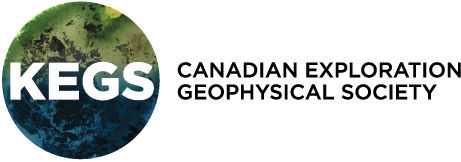KEGS SUMMER 2020
These past few weeks have been truly unlike anything we've experienced before. In light of our current circumstances, we are sad to announce that KEGS Toronto summer social events are postponed for the time being. We will be sure to keep you updated should things change. Please note that KEGS Ottawa webinars are also on pause for the summer.
KEGS TORONTO JUNE TALK
The upcoming June talk will be our final one before we break for the summer. We want to hear how everyone is doing during these challenging times so please join us online! We would also like to encourage submission for fall talks.
Date: 2020-06-09 @ 4:30pm
Venue: Webinar
show map
https://attendee.gotowebinar.com/register/7746708536911969295
|Add to Google Calendar|
Virtual Webinar. Register using the link below.
Speaker : Xiong Li, CGG
Bio: Xiong Li received his BEng and MEng degrees from Chengdu Institute of Geology, and a PhD degree in 1991 from the Chinese Academy of Sciences. He worked at Freie Universität Berlin in Germany, École Polytechnique de Montréal in Canada, and BHP in Melbourne of Australia before joining Fugro in Houston of Texas, USA in 2001. He has been working for CGG since 2013 with an acquisition of part of Fugro. He has been Chief Geophysicist of CGG Multi-Physics (and its predecessors in Houston) since 2005. He was a member of the team that developed the FALCON airborne gravity gradiometer technology. He and Yaoguo Li helped SEG and the Chinese Geophysical Society organize three GEM Workshops: in Beijing in 2011, in Chengdu in 2015, and in Xi’an in 2019. He has been an associate editor, for gravity and magnetic exploration methods, of GEOPHYSICS since 2005.
Title: High-Resolution Magnetic Data for an Improved Accuracy of Wellbore Positioning
Directional drilling maximizes the extraction of oil and gas while minimizing the cost. The Measurement While Drilling describes directional surveying and drilling-related measurements. A cost-effective MWD is to measure the distance and two angles: the dip measured by a triaxial accelerometer and the azimuth by a triaxial magnetometer. Magnetic survey relies on the principle of measuring the direction of the wellbore relative to the direction of the local geomagnetic field. Its accuracy is thus limited by the accuracy with which the Earth’s local magnetic field is known at the drilling site and time.
The MWD engineer uses the local gravity and magnetic fields to correct the measurements received from the downhole sensor for certain errors, including magnetic interference due to the drill string and local geology; then calculates the tool orientation from the corrected measurement; and finally advises the drilling engineer to adjust the drilling towards the desired direction. The local fields may be also used to perform a set of quality checks on the measured data.
We have developed a technique named MagCUBETM that converts surface-observed scalar total magnetic intensity anomalies into a subsurface vector crustal magnetic field distribution. We also estimate the uncertainties in the main magnetic field model, the disturbance field, and the local crustal field model. In particular, we build the crustal field model by using high-resolution magnetic data. A combination of these efforts results in an improved accuracy of wellbore positioning.
ORE DEPOSITS HUB
Ore Deposit Hub started in March 2020 to fill the void left by conferences and meetings cancelled due to COVID-19. A schedule of Ore Deposits Hubs hosted talks can be found here .
